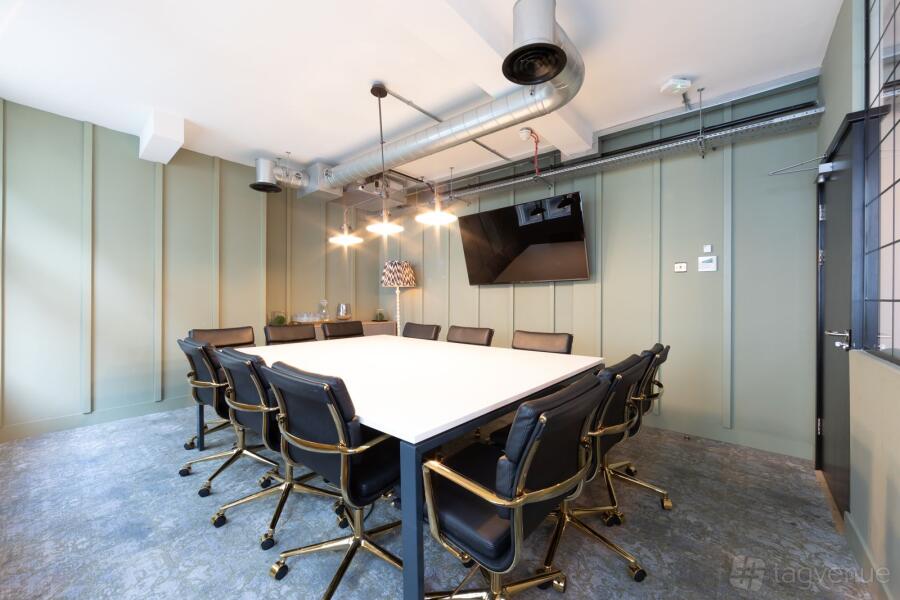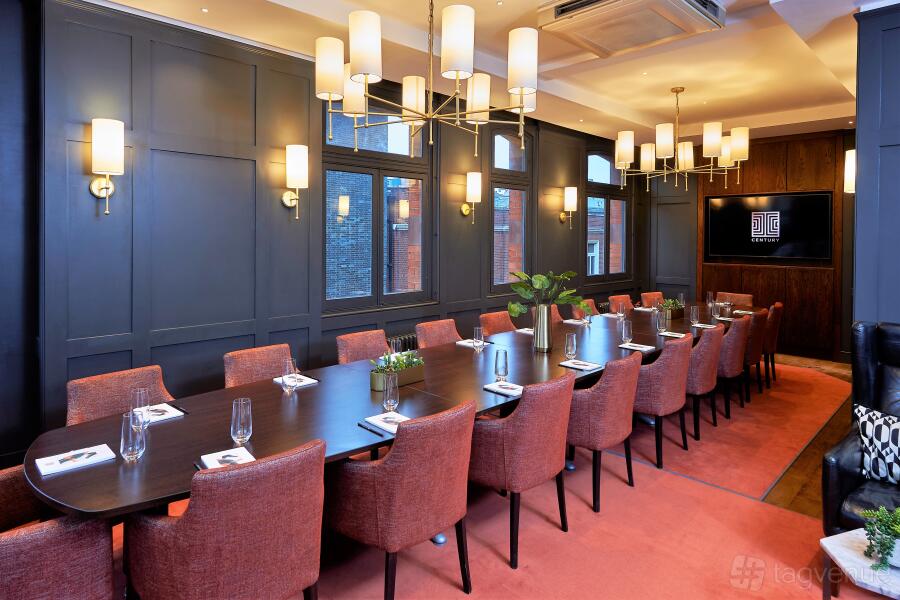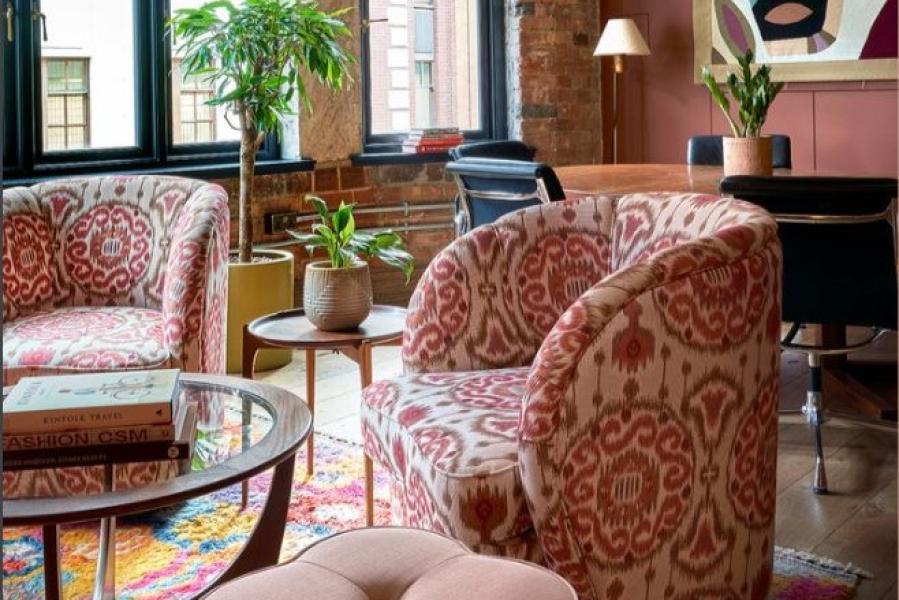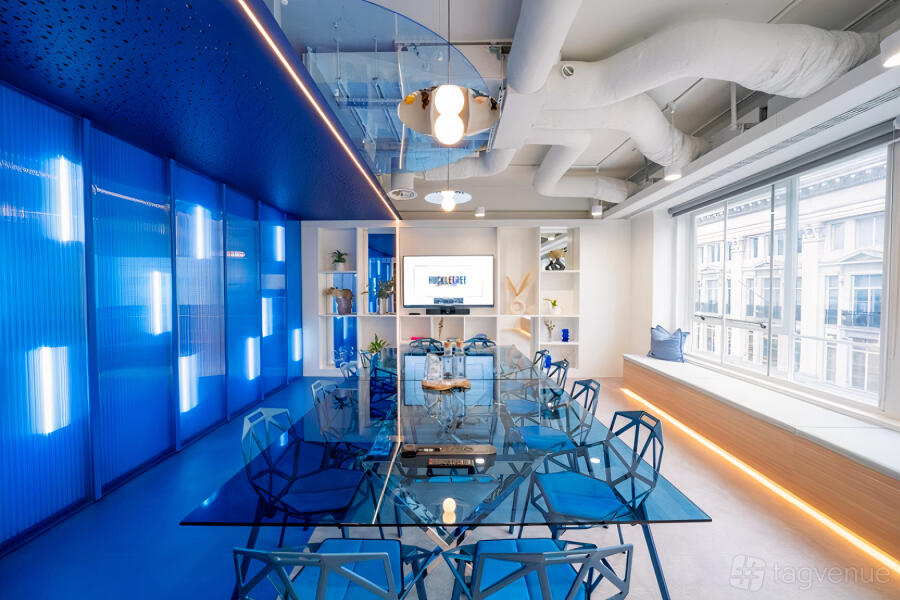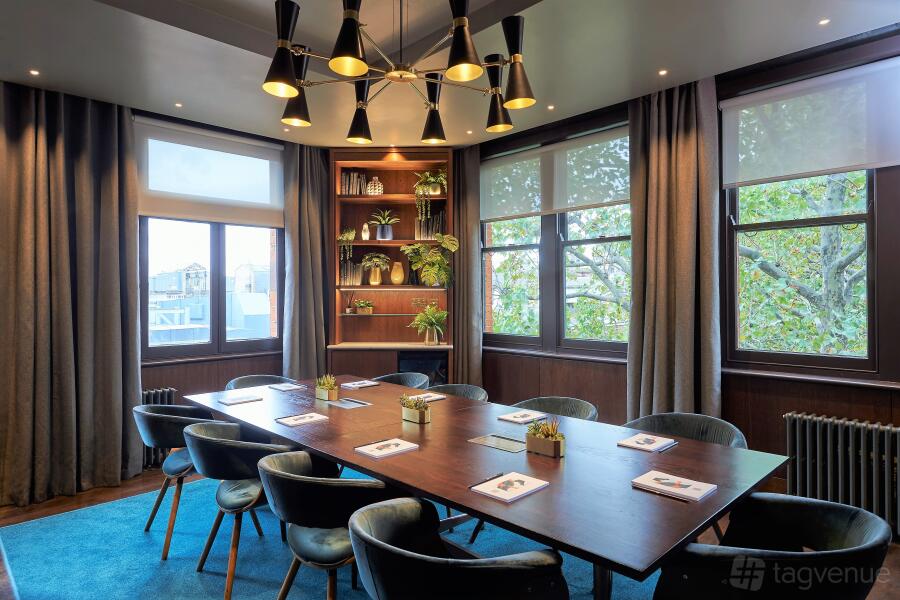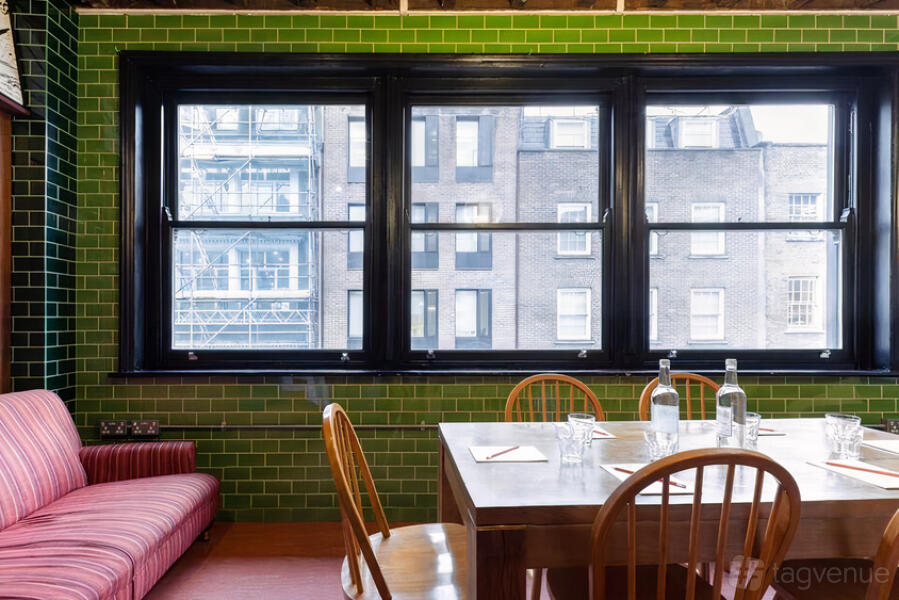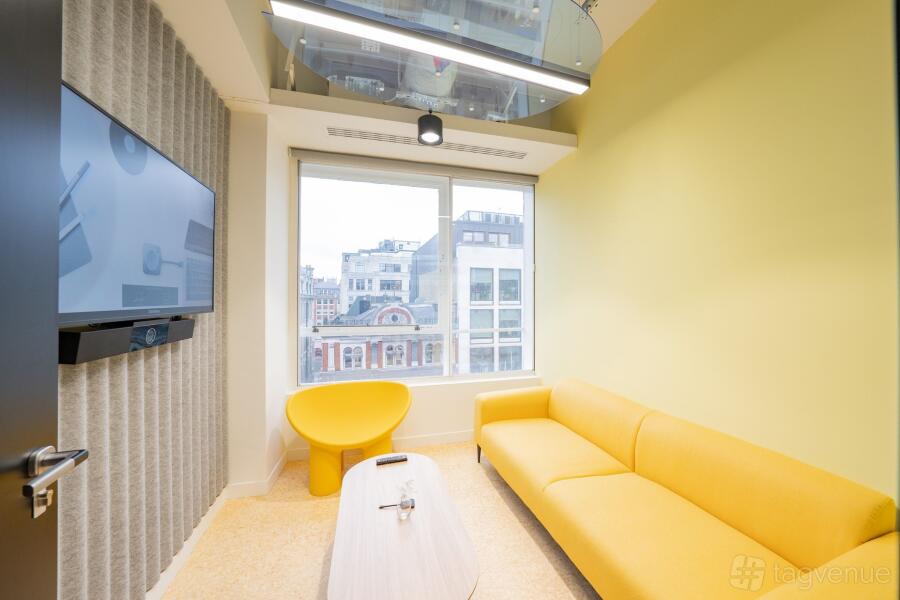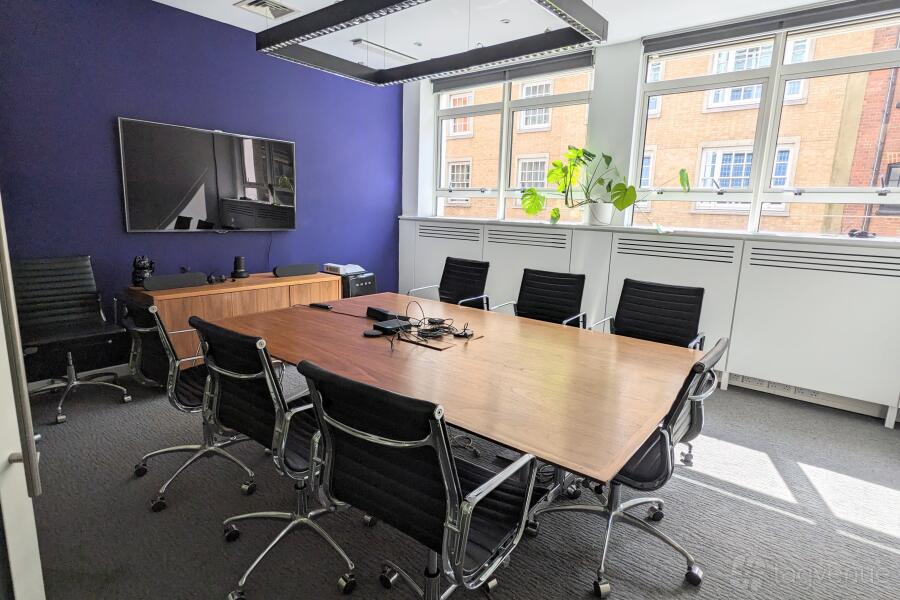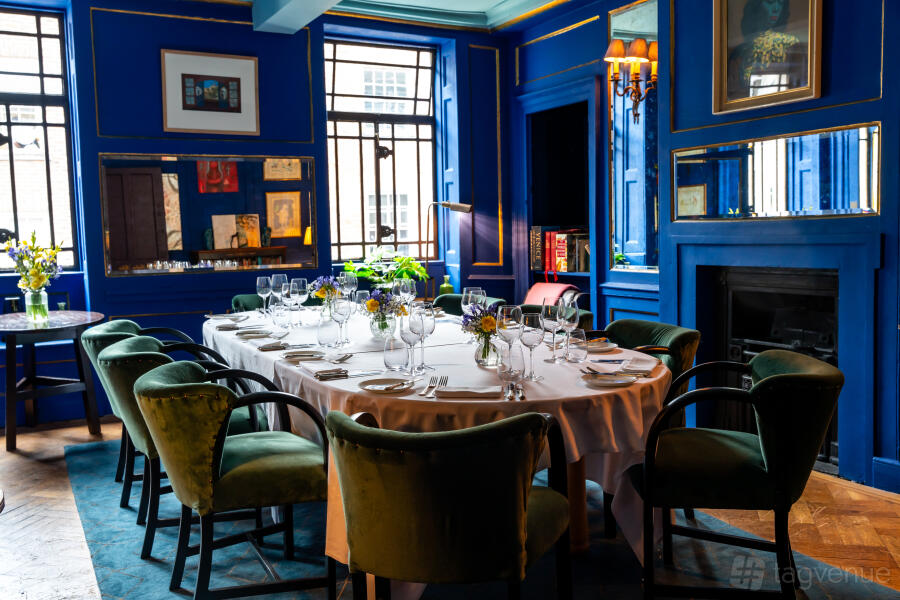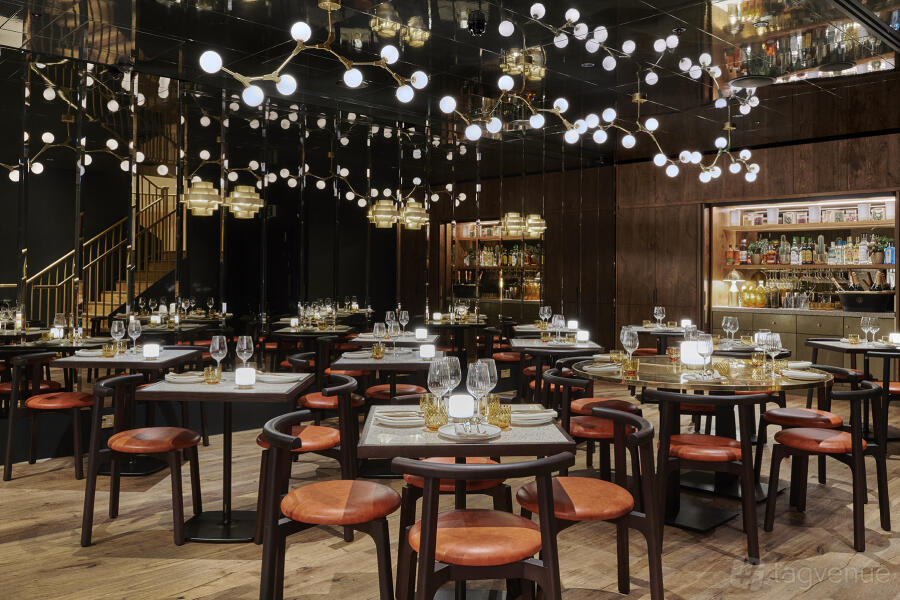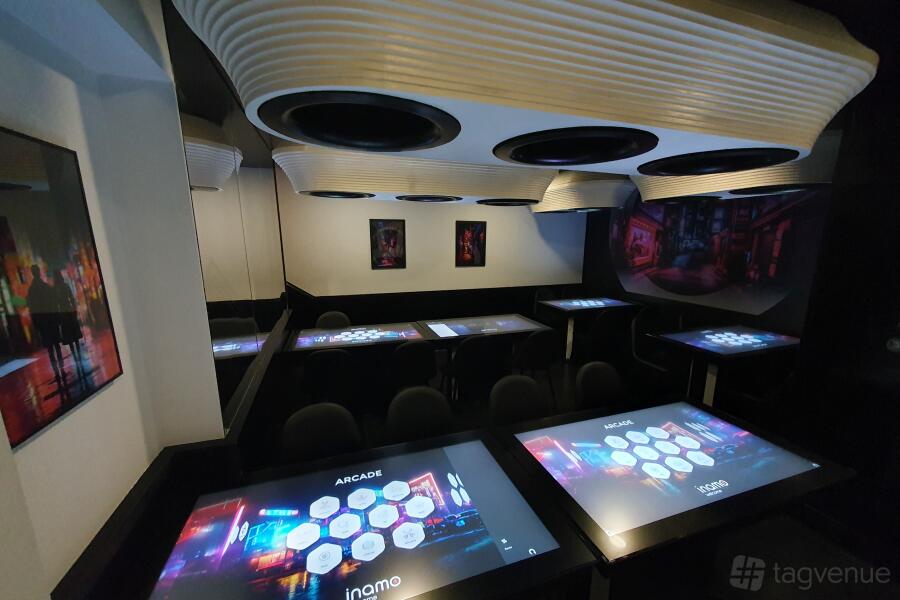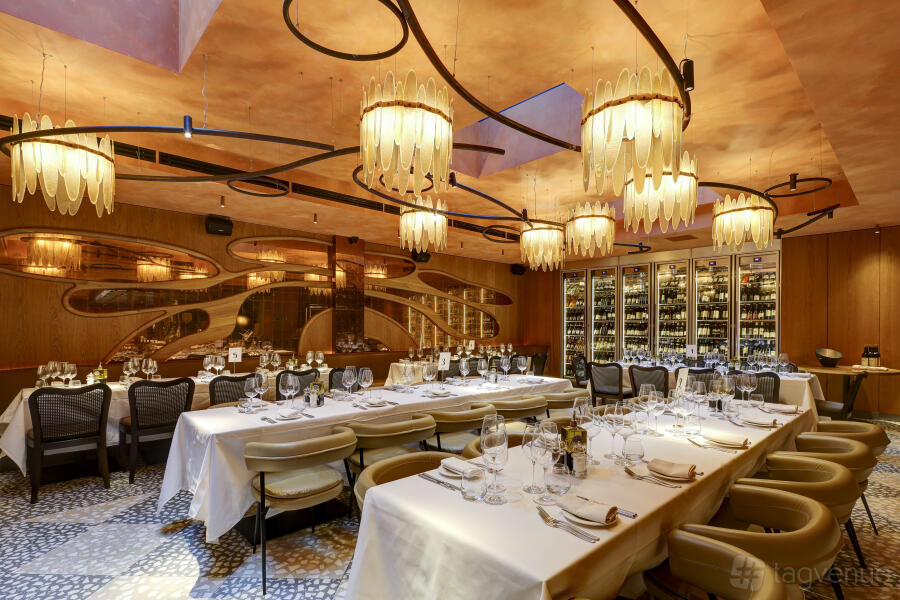Top Meeting Rooms in Soho
Known as one of London’s main entertainment districts, Soho is famous for fun, neon lights, big city buzz and, last but not least, Chinatown. This lively district is where the heart of London beats, so it’s no surprise it’s also popular for meetings of all kinds. From elegant boardrooms perfect for a brainstorming session to colourful coworking spaces ideal for a team-building meet-up, Soho has all the meeting rooms you may need. Try the Tagvenue search engine and see for yourself. Your meeting room is just a few clicks away!
-
from £83
hire fee / per hourBook nowMeeting Room 2
8 guestsThe Space Regent StreetPiccadilly Circus StationSoho, London#Supervenue
SSisaf
“Great space and facilities. Excellent meeting room.” -
from £110
hire fee / per hourBook nowThe Shaftesbury
16 guestsCentury ClubPiccadilly Circus StationSoho, LondonGGemma A.
“Room was a little noisy (later afternoon booking) which a few guests comments on.” -
from £124
hire fee / per hourBook nowMeeting Room 1
12 guestsThe Space Regent StreetPiccadilly Circus StationSoho, London#Supervenue
CCm
“Brilliant space, clean, well equipped and would certainly book again!” -
from £90
hire fee / per hourBook nowThe Wardour
22 guestsCentury ClubPiccadilly Circus StationSoho, LondonTThuy N.
“Great location. Room was good size for number of people we had (19).” -
from £55
hire fee / per hourBook nowThe Boardroom
8 guestsThe Resident SohoTottenham Court Road StationSoho, London#Supervenue
Conveniently located on the ground floor, the boardroom provides a modern and functional environment suited for meetings, presentations, or interviews. -
from £162
hire fee / per hourBook nowGlasshouse 201
6 guests1 WarwickPiccadilly Circus StationSoho, LondonThis versatile meeting room with a mid-century finish features informal lounge seating and a boardroom table seating six. Overlooking Warwick Street, this room is ideal for small meetings, previews, podcast recordings and -
from £160
hire fee / per hourBook nowMinted
12 guestsHuckletree Oxford CircusOxford Circus StationSoho, LondonThe Minted is our 4th floor boardroom overlooking Oxford Street. The space is perfect for VIP meetings and formal get-togethers. This room is equipped with AV tech (LED screen, mic, webcam) for virtual meetings, Air conditioning, -
from £162
hire fee / per hourBook nowMarshall 202
10 guests1 WarwickPiccadilly Circus StationSoho, LondonIf you're looking for a perfect space to host your next corporate meeting - Marshall room is an ideal option for you. The interior's atmosphere is cozy and furniture along with detailed decorations makes the place very aesthetically -
from £110
hire fee / per hourBook nowThe Compton
10 guestsCentury ClubPiccadilly Circus StationSoho, LondonAAima J.
“The staff were really friendly and helpful to us. Would absolutely book again.” -
from £70
hire fee / per hourBook nowWriter's Room
8 guestsThe Union ClubTottenham Court Road StationSoho, LondonOur Writers Room offers a slick and functional small meeting space, overlooking Greek Street, Soho. With rich red tones of brick and wood contrasted with dark tile, this room oozes style for those wanting a more sophisticated -
from £60
hire fee / per hourBook nowMars
5 guestsHuckletree SohoPiccadilly Circus StationSoho, LondonLooking for a meeting room that's out of this world? Our 5 person space at Huckletree Soho is perfect for team catch-ups, interviews and brainstorming. -
from £90
hire fee / per hourBook nowBoardroom
8 guestsStarstruck HQTottenham Court Road StationSoho, London#Supervenue
Our Boardroom is a well-appointed space designed for intimate meetings and discussions. It features a central table with four comfortable chairs, a big screen TV for presentations, air conditioning for a pleasant atmosphere,
- 1
- 2
- 3
- ...
- 5
Popular filters
Capacity
Budget
Area type
Venue type
Catering and drinks
Accessibility features
Pick from Soho's Affordable Boardrooms
Restaurants with Meeting Facilities in Soho

FAQs about Top Meeting Rooms in Soho
In Soho, prices of meeting rooms average around £100 hire fee per hour. The exact costs depend on the room size, audiovisual equipment (such as projectors or microphones), or high-speed Wi-Fi. Additional services, such as catering or on-site coordinators, may cost extra. Flexible configurations for presentations, workshops, or networking, along with amenities such as parking or dedicated breakout rooms, will also affect the price. See usual price ranges in Soho, based on Tagvenue data, as of December 2025:
| From £75 | to £150 | hire fee per hour |
| From £1000 | to £3500 | minimum spend per event |
| From £707 | to £1500 | hire fee per day |
Based on the popularity and user ratings on Tagvenue (updated December 2025), the best options include:
-
Writer's Room at The Union Club in Soho - rated 4.9/5
Venue said: The Union offers a range of unique spaces for all occasions. Whether for business or pleasure, we’ll have a meeting or event space for you. Just so you know, our small meeting rooms are available to hire by the full or half-day... -
Glasshouse 201 at 1 Warwick in Soho - rated 4.8/5
Venue said: Overlooking Warwick Street, this room is ideal for small meetings, previews, podcast recordings and intimate dinners alike. Our meeting rooms are bookable by the hour for a min of 2 hours. -
Chambers 3&4 at Courthouse Hotel Soho in Soho - rated 4.8/5
Our user said: ‘I liked the size and layout of the room, it worked well for our event.’
You'll find meeting rooms in various sizes, from smaller spots to larger venues; keep in mind that the type of space and your chosen layout will affect the capacity! Below you can see the typical venue sizes in Soho, together with the standard prices in each size range, based on Tagvenue data (December 2025):
| Small | up to 10 guests | prices average £90 hire fee per hour |
| Medium | between 15 and 45 guests | prices average £1500 minimum spend per event |
| Large | over 70 guests | prices average £2500 minimum spend per event |
Soho has been known for different things throughout for years, but what makes it such a sought-after meeting area today? Here’s a couple of the most important reasons:
- Unique energy – A dazzling fashion hub in the 60’s (think the famous Carnaby Street and Swinging London era), Soho remains a trend-setting, always buzzing district. Sound like a good spot for a creative meeting? Definitely!
- Central location – Bordered by Oxford Street and Regent Street, Soho is in the centre of all the action! If you need a unique meeting room near Oxford Circus Station and Piccadilly Circus Station, we suggest you start looking for it here.
- Entertainment options – Last but not least, Soho boasts plenty of places to let your hair down after the meeting – that’s exactly what it’s famous for!
Not sure which part of Soho will make the best fit for your meeting? Have a look at our Soho cheat sheet:
- Soho Square – This is the quieter, greener and more historical side of Soho. Looking for something central but not too modern? You’ll love this one-of-a-kind spot. Oh, and it’s just steps away from the Tottenham Court Road tube station.
- Leicester Square – Located on the borders of Soho, Leicester Square can be considered a separate area with its distinctive vibe. It’s wonderfully vibrant both during the day and the night.
- Piccadilly Circus – Possibly one of the most iconic spots in London, Piccadilly Circus needs no introduction. So, why not meet where the neon lights shine?
Your Guide to Hiring Meeting Rooms in Soho
When preparing for a meeting, the location isn’t the only factor that will help you make it a success. Below are some tips that will help you have the most productive meeting.
Tips for Productive Meetings
Set a goal - All meetings should start with their purpose clearly defined. The goal of your meeting should always be known to you and the attendees, and it should be achievable within the time frame of that meeting. If you don't know what you're trying to achieve, then how can you have a productive session?
Decide on the participants - If you know the goal of your meeting, it’s time to decide who will participate in it. Invite those people who will add value to your discussion and whose insights are necessary to prompt the meeting forward. Avoid inviting people out of courtesy if their presence isn’t necessary. Too many people attending the meeting may cause it to sidetrack.
Assign roles - Once you know the purpose of the meeting and who will show up, assign roles to the participants. Clearly defined roles will help everyone stay focused on what they need to do and say.
Set up the agenda - One of the best ways to keep a meeting on track is to have an agenda. An agenda is a list of things that need to be discussed and decided during the session. It helps keep meetings from getting sidetracked or bogged down on side issues. The agenda also helps participants prepare for meetings by giving them some idea of what will be covered, so if possible, send it out beforehand to everyone attending.
Prepare the materials - If you’re going to be using some materials during your meeting, make sure they’re set and ready before the participants enter the room. Neither you nor the participants want to scramble around trying to figure out what you’re working on at the moment, so if you get everything ready before the meeting, you’ll avoid that.
Keep the time - If you want to keep your meetings as productive as possible, starting and ending them on time is essential. Allocate time to each point of your agenda, and keep track of time to make sure you’re not spending too much time on some tasks that don’t require it. If you have a meeting that runs over, it can be difficult for people to stay focused.
Things to avoid when in a meeting:
Don't waste time on unnecessary details. Get right to the point and keep the discussion focused on what needs to be done. Even if you have some icebreakers or team-building planned for the meeting, keep them short and within the set time limit.
Don’t let people derail the meeting by going off-topic or getting into lengthy discussions that go nowhere. It’s important to give people time to express themselves and ask questions, so prepare some time for a Q&A and keep track of all conclusions.
Don’t forget breaks as they’re vital for keeping your team focused and on their feet. Even if you have a tight schedule and it’s tempting to pack as much work as possible into the planned meeting time, breaks will help you achieve your goals in a better and more effective way.
Don’t forget the follow-up. The most productive meeting will be the one that gives every participant an idea of what are the next steps to take. Send out a note after the meeting finishes so the follow-up is clear and known to everybody.
If you need some more tips, here’s a checklist to help you best prepare for your next meeting.
If you’re running a startup or part of a small team, you know the price of a meeting room matters, especially in busy Soho where space isn’t cheap. That’s why we’ve rounded up some affordable meeting rooms that still tick the boxes for comfort, location, and flexibility. These are great for everything from quick team catch-ups to full-day workshops. And if you're a hybrid team that only meets in person once in a while, coworking-style rooms are a smart and budget-friendly option.
Cheap Soho Meeting Spaces – Best for Startups on a Budget
Here are some top picks where you can book without breaking the bank:
- The Resident Soho – From £55/hour, this one’s got room for 8 and works well for small strategy sessions or client calls. Good balance between price and space.
- The Union Club – From £70/hour, this is a relaxed, creative space with a homely vibe. Room for 4 people and well suited for creative teams or agencies.
Coworking Meeting Spaces – Perfect for Hybrid Teams
Coworking meeting rooms are great when you don’t need a full office, but still want somewhere professional to meet and collaborate:
- Huckletree Soho – This one’s built for startups. With rooms for 5 to 14 people), you get creative, tech-friendly spaces with great Wi-Fi and coffee on tap. Awesome for brainstorming or team days.
- The Space Regent Street – Two meeting room sizes (8 or 12 seats), priced from £66/hour. Modern, bright rooms with central Soho access – great if you’re meeting a client or investor.
- Golden Square – A calm space for up to 6 people, priced at £84/hour. It’s ideal for focused sessions without distractions.
These rooms usually include screens or whiteboards, and often have reception support. They're especially good if your team is remote most of the time and just needs a space to reconnect now and then.
Final tip: Soho meeting rooms get booked up fast, especially the cheaper ones. If you’ve got a date in mind, use Tagvenue to filter by price, size, and location, and book directly online. That way you’re not wasting time chasing quotes or calling around.
Meeting Rooms in nearby suburbs
Verified Reviews of Meeting Rooms in Soho
Page last updated in December 2025
To provide you with relevant information, our pages are refreshed using an algorithm that aggregates real-time data, including bookings, reviews, and venue updates.


